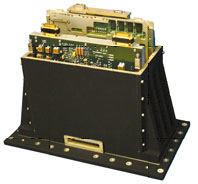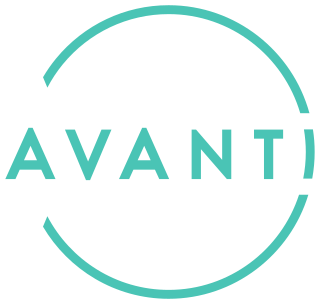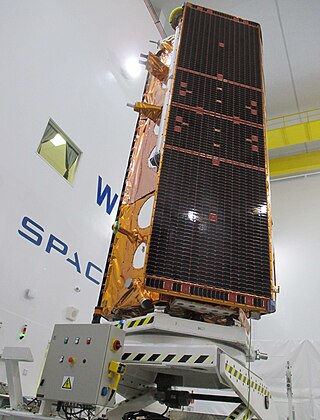Related Research Articles

The Polar Satellite Launch Vehicle (PSLV) is an expendable medium-lift launch vehicle designed and operated by the Indian Space Research Organisation (ISRO). It was developed to allow India to launch its Indian Remote Sensing (IRS) satellites into Sun-synchronous orbits, a service that was, until the advent of the PSLV in 1993, only commercially available from Russia. PSLV can also launch small size satellites into Geostationary Transfer Orbit (GTO).
Orbital Sciences Corporation was an American company specializing in the design, manufacture, and launch of small- and medium- class space and launch vehicle systems for commercial, military and other government customers. In 2014, Orbital merged with Alliant Techsystems to create a new company called Orbital ATK, Inc., which in turn was purchased by Northrop Grumman in 2018. The remnants of the former Orbital Sciences Corporation became a subsidiary of Northrop Grumman, known as Northrop Grumman Space Systems.

SES S.A. is a Luxembourgish satellite telecommunications network provider supplying video and data connectivity worldwide to broadcasters, content and internet service providers, mobile and fixed network operators, governments and institutions.
The Space Test Program (STP) is the primary provider of spaceflight for the United States Department of Defense (DoD) space science and technology community. STP is managed by a group within the Advanced Systems and Development Directorate, a directorate of the Space and Missile Systems Center of the United States Space Force. STP provides spaceflight via the International Space Station (ISS), piggybacks, secondary payloads and dedicated launch services.
XTAR, LLC is a commercial satellite operator exclusively providing services in the X band frequency range, which is the communications cornerstone of today's military, diplomatic, humanitarian and emergency disaster response operations. A privately owned and operated company, XTAR supports the critical satellite communications needs of governments around the world through its two X-band payloads. The XTAR satellites were designed and built by private financing. Loral Space & Communications, Inc. owns the majority share. XTAR is headquartered in Ashburn, VA.

Minotaur IV, also known as Peacekeeper SLV and OSP-2 PK is an active expendable launch system derived from the LGM-118 Peacekeeper ICBM. It is operated by Northrop Grumman Innovation Systems, and made its maiden flight on 22 April 2010, carrying the HTV-2a Hypersonic Test Vehicle. The first orbital launch occurred on 26 September 2010 with the SBSS satellite for the United States Air Force.

Internet Routing in Space (IRIS) was a program to build a radiation-tolerant IP router created by Cisco Systems for satellite and related spacecraft. It was a follow-on from Cisco's earlier CLEO router in space on the UK-DMC satellite. The Cisco Space Router was launched to geostationary orbit on board Intelsat 14 (IS-14), a spacecraft built by Space Systems/Loral for satellite operator Intelsat, in November 2009. IRIS was evaluated by the United States Department of Defense by way of a JCTD. The Space Router runs Cisco IOS software and also contains an onboard Software-defined radio running satellite modem waveforms. The United States Department of Defense used the JCTD to evaluate the reduced latency, improved throughput and increased flexibility provided by the Space Router.

The space segment of an artificial satellite system is one of its three operational components. It comprises the satellite or satellite constellation and the uplink and downlink satellite links.

Avanti Communications is a UK based satellite operator, selling wholesale satellite broadband and satellite connectivity services to Internet Service Providers, Mobile Network Operators, Enterprises, Governments and other satellite operators. The Avanti HYLAS fleet of satellites provides coverage of the Americas, Europe, the Middle East and Africa.
LuxSpace is a European space systems contractor based in Betzdorf in Luxembourg. It was founded in November 2004 as a daughter company of OHB AG, and began operations in January 2005.

Electron is a two-stage, partially recoverable orbital launch vehicle developed by Rocket Lab, an American aerospace company with a wholly owned New Zealand subsidiary. Electron was developed to service the commercial small satellite launch market. Its Rutherford engines are the first electric-pump-fed engine to power an orbital-class rocket. Electron is often flown with a kickstage or Rocket Lab's Photon spacecraft. Although the rocket was designed to be expendable, Rocket Lab has recovered the first stage twice and is working towards the capability of reusing the booster. The Flight 26 (F26) booster has featured the first helicopter catch recovery attempt.
The JSAT constellation is a communication and broadcasting satellite constellation formerly operated by JSAT Corporation and currently by SKY Perfect JSAT Group. It has become the most important commercial constellation in Japan, and fifth in the world. It has practically amalgamated all private satellite operators in Japan, with only B-SAT left as a local competitor.
SHERPA is a commercial satellite dispenser developed by Andrews Space, a subsidiary of Spaceflight Industries, and was unveiled in 2012. The maiden flight was on 3 December 2018 on a Falcon 9 Block 5 rocket, and it consisted of two separate unpropelled variants of the dispenser.

Diwata-2 or Diwata-2B is a Philippine microsatellite launched on October 29, 2018. It is the first satellite launched under the STAMINA4Space program.

GSAT-29 is a high-throughput communication satellite developed by the Indian Space Research Organisation (ISRO). The mission aims at providing high-speed bandwidth to Village Resource Centres (VRC) in rural areas. The two Ku and Ka operational payloads will provide communication services to Jammu and Kashmir and Northeast India under Digital India programme. At the time of launch GSAT-29 was the heaviest satellite, weighing 3,423 kg (7,546 lb), that was placed in orbit by an Indian launch vehicle. Approved cost of GSAT-29 is ₹175.63 crore (US$22 million).

Paz is a Spanish Earth observation and reconnaissance satellite launched on 22 February 2018. It is Spain's first spy satellite. The satellite is operated by Hisdesat. Paz was previously referred to as SEOSAR.
Relativity Space is an American aerospace manufacturing company headquartered in Long Beach, California. Relativity Space is developing manufacturing technologies, launch vehicles, and rocket engines for commercial orbital launch services. The company is notable for manufacturing most of their Terran 1 and Terran R rocket parts using 3D printing.
Vigoride is a space tug that is under development by Momentus Space. The total payload capacity that it can support to LEO is 750 kg. Vigoride is capable of changing orbital planes, inclination, and propelling spacecraft to up to 2 km/s. It also provides small satellite operators access to power, communications, and station keeping while with the tug. Momentus states that the cost is roughly $15,000 per kg depending on the exact customer specifications. Vigoride uses a microwave electrothermal thruster (MET) and water as the propellant. In 2019, the first test of the MET in space was completed and was deemed a success in a press release, while the U.S. Securities and Exchange Commission accused it of misleading investors. The maiden launch was originally scheduled for January 2021, but was delayed due to Momentus not being able to receive FAA approval before the launch. On 22 March 2021, a Vigoride mock-up named Vigoride SC was launched in place of a functional Vigoride. In October 2020, the company stated that it had already booked 1.5 Vigorides out of the 3 planned to be launched in December 2021. On 25 May 2022, Momentus launched its first Vigoride spacecraft aboard SpaceX Transporter 5 mission.

Photon is a satellite bus based on Rocket Lab's kick stage.
D-Orbit is a private aerospace company headquartered in Italy with subsidiaries in Portugal, the UK and the US.
References
- ↑ "SpaceX wins Kacific, Sky Perfect Jsat condosat launch, new or used rocket TBD". September 5, 2017. Retrieved August 23, 2019.
- ↑ "Loft Orbital unveils 21-partner supply chain for small condosat missions". Space News . August 6, 2018. Retrieved August 24, 2019.
- ↑ Steven Kaufman; Randy Segal. Hosted Satellite Payload Procurement: A Brief "How-To" Guide (PDF). nasa.gov (Report). Hogan Lovells. pp. 2–4. Retrieved March 20, 2023.